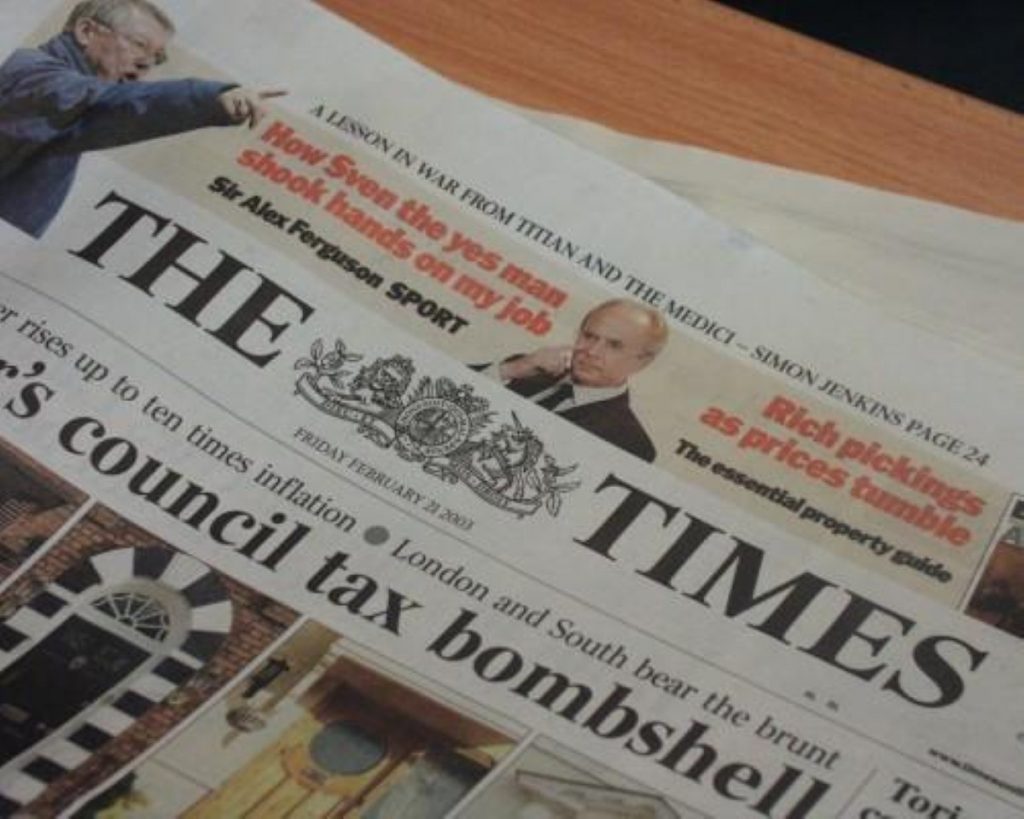End of broadsheet Times
216 years of publishing history ends on Monday, as The Times switches to a tabloid format.
The decision to go fully compact – after trials in London and around the country – was made after sales of the newspaper jumped 4.5 per cent.
Although the weekday and Saturday editions of The Times will change, the Sunday Times is set to remain a broadsheet.
The Independent was the first UK broadsheet newspaper to run a tabloid edition. It went completely tabloid earlier this year and was rewarded by a 20 per cent rise in sales.


Analysts will be watching the fortunes of The Times very carefully. The Independent’s core market is in liberal, metropolitan Britain, very different from The Times’ core strength in affluent, suburban and rural southern England. It remains to be seen how these conservative minded readers react to the change.
The Daily Telegraph – whose readership demographics most closely mirror The Times – will be hoping to cash in on any dissatisfaction, and this morning ran a banner headline declaring the Telegraph to be “the best in broadsheet journalism”.
The Times though believes that its new approach will attract new readers whom are “intimidated” by the broadsheet format, or find it difficult to fit the paper into the limited space available on work commutes.
In an editorial this morning, the editor of The Times, Robert Thomson, said he believed the change to the compact format will ensure that: “The Times will continue to prosper and to perform its unique and crucial role in British society.”
Continuing, Mr Thompson stressed the strengths of The Times’ coverage, saying that: “The page numbers may be different, but the compact is created by the same editors, designers and reporters who produced the broadsheet, and they are the best in the craft.
“Since we launched the compact edition almost a year ago, it has been clear that the format has attracted many new readers to The Times and further expanded our influence. While our principal rivals are in serious decline, an increasing number of readers has noticed the qualitative difference in coverage and switched to The Times.”
He admitted that some readers may take time to become accustomed to the new layout – noting that “there are few relationships as intimate as that of newspaper and devoted reader” and promised help to enable readers to find their way around the new-look paper.












